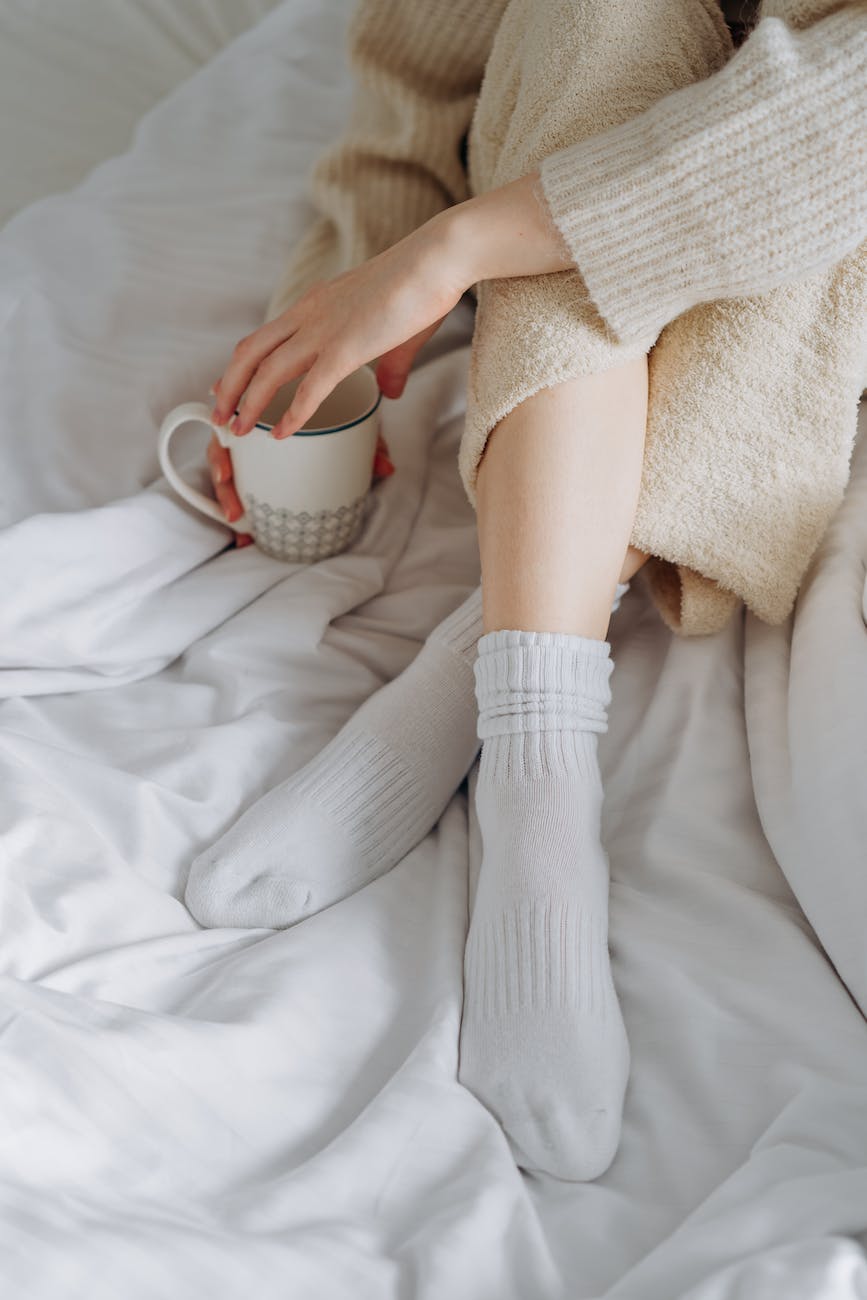knitting socks: cozy feet for every season
There’s nothing quite like the feeling of slipping on a pair of handknit socks that fit your feet perfectly. The soft, warm fabric feels like a hug, and the knowledge that you made them yourself makes them even more special.
Knitting socks takes skill and patience. You need to be able to knit in the round, work small circumferences, and create heels and toes that are both comfortable and durable. But the satisfaction of seeing your handiwork come together is worth it.
There’s something about knitting socks that feels both practical and whimsical. They’re a practical garment that can keep your feet warm on a cold day, but they’re also a way to express your creativity. You can choose different colors, patterns, and textures to create socks that are uniquely your own.
If you’re looking for a new knitting project, I highly recommend trying your hand at socks. They’re a challenging but rewarding project that will give you years of enjoyment.
Here are some additional thoughts on the topic:
- There are many different patterns available for handknit socks. You can find patterns for simple socks that are easy to knit, as well as more complex patterns with intricate designs.
- When choosing a pattern, it’s important to consider the type of yarn you want to use. Some yarns are better suited for socks than others.
- Knitting socks takes time and patience. But the finished product is worth it.
- Handknit socks make great gifts for friends and family.
I hope this inspires you to try your hand at knitting socks. It’s a rewarding project that you’ll enjoy for years to come.
Here are some tips for knitting socks:
- Start with a simple pattern. There are many patterns available for beginner knitters.
- Use a yarn that is specifically designed for socks. This type of yarn will be soft, warm, and durable.
- Pay attention to gauge. Gauge is the number of stitches and rows per inch. If your gauge is too loose, your socks will be big. If your gauge is too tight, your socks will be small.
- Be patient. Knitting socks takes time and patience. But the finished product is worth it.
I hope these tips help you on your journey to knitting your own handknit socks!
Why Handknit Socks?
- Make well-fitting socks in your exact size for maximum comfort
- Customize colors and patterns to suit your style – go bright and funky or classically subdued
- Choose beautiful natural yarns like wool and cotton that feel great on skin
- Design specialty socks for hiking, skiing, running, or lounging with preferred features
- Knit temperature appropriate fabrics – lightweight cottons, warm wool blends, or acrylics
- Use specialty techniques like cables and lace only where needed, not all over
- Create unique gifts from the heart that are used frequently and appreciated
Getting Started with Socks
Most sock patterns include:
- Instructions for knitting in the round on double pointed or circular needles
- Shaping the foot with increases and decreases
- Working the heel flap and gusset
- Decreasing for the toe
- Finishing the cuff with stretchy ribbing
Trying basic patterns builds skills in small circumference knitting, working heels and toes, and handling nylon-infused yarn.
Sock Knitting Techniques
Cuffs: Wide ribbed cuffs cling snugly to ankles without sagging or slipping. Foldover cuffs add extra warmth.
Heels: Common choices are flap and gusset, short row, afterthought, and peasant heel styles. Patterns explain each method.
Toes: Rounded toes offer maximum comfort. Square toes suit pointed shoes. Decrease until stitches remain to close toe seam.
Cast on: Long tail or Judy’s magic cast ons allow very stretchy edges for fitting over heels.
Colorwork: Stranding, slipped stitch patterns, and lace add colorful interest to legs and feet.
Choosing Sock Yarn and Needles
Look for yarns with nylon blended into the wool or cotton. Nylon adds strength and stretch resistance. Superwash treated yarns allow machine washing. Match needles to yarn thickness:
- Laceweight yarn: 1.5-2.5 mm double pointed or circular needles
- Fingering weight: 2-2.75 mm
- Sport weight: 2.25-3 mm
- DK weight: 3-3.5 mm
Yarns with colorful variegations knit into exciting self-striping patterns. Handpainted art yarns make stunning heirloom socks.
Sock Patterns for All Levels
Beginner: Basic top down socks worked in one color. Teach essential construction.
Easy: Focus on pattern stitches like ribs and simple cables only on leg portion. Keep heel and toe plain.
Intermediate: Introduce colorwork, slip stitch patterns, texture details, and lace panels.
Advanced: Fully patterned 3D texture socks, matched heels and toes, unusual constructions like toe up.
Challenge: Miniature socks, stranded patterns, complex colorwork, innovative constructions, hybrids with lace or cables.
Knitting socks is a rewarding and versatile hobby that can be enjoyed by people of all skill levels. Whether you’re a beginner or an experienced knitter, there’s a sock pattern out there for you. With a little time and patience, you can create beautiful, custom-made socks that will keep your feet warm and comfortable for years to come.
I hope this article has inspired you to give knitting socks a try. With so many different patterns and techniques to choose from, there’s sure to be a pair of socks out there that’s perfect for you.
Here are some additional thoughts on the topic:
- Knitting socks is a great way to use up leftover yarn.
- You can knit socks for yourself, your family, and your friends.
- Knitting socks can be a relaxing and meditative activity.
- Knitting socks is a great way to learn new knitting techniques.
I hope you enjoy your journey into the world of knitting socks!
